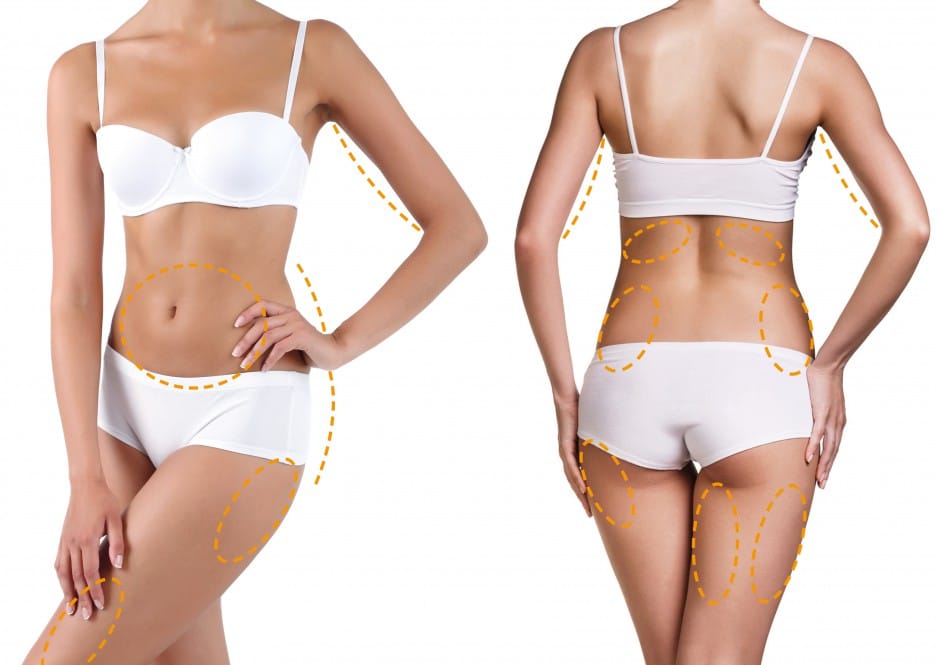The authors are Chase D. Derrick, MD, of the University of Missouri's Department of Plastic Surgery and Justin M. Broyles, MD, of the Johns Hopkins University School of Medicine, and Sachin M. Shridharani, MD plastic surgeon in New York — conducted a systematic review of the existing literature to demonstrate the effectiveness and safety of the cryolipolysis procedure.
The researchers used the MEDLINE, Embase, PubMed and Cochrane databases to identify 34 published studies on cryolipolysis treatment for body contouring. Of these articles, 19 met the selection criteria and were included in the analysis. A total of 16 were analyzed, which included 1,445 patients with reportable safety data. Twelve patients (0.82%) reported complications, the most common of which was a difference in skin sensitivity lasting more than four weeks. A total of 295 patients had objective evidence of adipose tissue reduction. The mean time from the time of application to the objective evaluation of the reduction of adipose tissue as a result was 3.83 months. The mean reduction in adipose tissue was 19.55% relative to the control group.
"Selective cryolipolysis, in short-term follow up, appears to be a reliable method to reliably reduce local subcutaneous fat deposits," the authors conclude. “The reported complications are rare and resolve without any treatment or intervention. Future studies should aim to optimize the selection of patients who are suitable candidates for the treatment and the results of the treatment while obtaining long-term follow-up data. "
This study has been published in Aesthetic Surgery Journal.
Cryolipolysis combined with shock-acoustic waves reduces adipose tissue
An alternative to liposuction using a combination of cryolipolysis and acoustic shock waves shows promise for reducing subcutaneous fat and cellulite, according to a recent study.
The combined treatment is called "Ice-Shock Lipolysis" and uses a combination of shock waves and cryolipolysis to reduce the circumference of the treated areas, treating both localized fat and cellulite. Researchers in collaboration with the second University of Naples studied the combined treatment in 50 patients. They found a mean reduction in adipose tissue thickness after the treatments of greater than 3 cm, with a mean reduction of 4.45 cm in the circumference of the treated area.
The combination of shock waves, commonly used to treat musculoskeletal disorders and cryolipolysis which is a non-invasive method to destroy localized subcutaneous fat, caused the programmed death and slow apoptosis and resorption of the damaged fat cells.
"The results show that Ice-Shock lipolysis is a safe, effective and well-tolerated non-invasive procedure for body contouring," the authors concluded. "In particular, (we) believe this could be an ideal alternative to liposuction for patients who need only small or moderate amounts of adipose tissue and cellulite to be removed or are not suitable candidates for surgical approaches to body contouring .”
The study was published in Aesthetic Plastic Surgery. Aesthetic Plastic Surgery
——————————————————————————————————
New trends in cryolipolysis treatment
Treatments in the submaxillary area ("double chin") and smaller, more comfortable treatments in general are the new trend in cryolipolysis, according to Girish (Gilly) Munavalli, MD, MHS, medical director, Dermatology, Laser and Vascular Disorders at State of Carolina, in Charlotte, America.
"There is a lot of interest in double chin reduction," Dr. Munavalli told colleagues during the 36th Annual Meeting of the American Society for Laser Medicine & Surgery (ASLMS 2016) in Boston. He mentioned the CoolSculpting system [Zeltiq] which has received FDA approval for fat reduction in the submandibular region in 2015 and introduced the CoolMini applicator for the treatment of small accumulated fat, as seen in the subgenual region. Some doctors have also used it to reduce fat deposits in the armpit area and on the medial surface of the knee. "
Unlike Kybella [Allergan] treatment for hypoglycemia, CoolMini does not cause significant swelling and bruising, and patients can return to normal activities with no recovery time, says Dr. Munavalli, assistant professor of dermatology at Wake Forest School of Medicine and clinical assistant professor of medicine at the University of North Carolina, CoolMini does not require as many treatment sessions as comparable to competing treatments
Today's cryolipolysis technology also offers shorter treatments with improved comfort, according to Dr. Munavalli. He refers to a study also presented at ASLMS 2016, referring to the CoolAdvantage applicator [Zeltiq].
"It has a cooling cup (handpiece) that maximizes tissue contact for more effective cooling and provides a lower temperature during treatment, so the same effectiveness is achieved in 35 instead of 60 minutes," says Dr. Munavalli. "It also aspirates (pulls) the tissue more gently into the cup compared to traditional parallelogram applicators, so there is more comfort during the procedure, as well as much less bruising after the treatment."
The above was presented at the 36th Annual Conference of the American Society for Laser Medicine & Surgery (ASLMS 2016)

